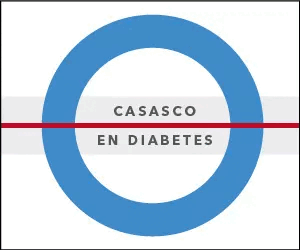Challenges in addressing adolescent obesity
Keywords:
obesity, adolescentsAbstract
The increase in obesity in pediatric ages is a global public health problem. It is a strong predictor of obesity in adult life, with health and economic consequences for both the individual and society. Obesity has physical and psychological consequences at all stages of life. Adolescence in particular, period between 10 and 19 years, is a stage of important physical changes that can favor the appearance of comorbidities such as fatty liver, type 2 diabetes, hypertension and osteoarticular disease. In turn, obesity can impact the mental health and social relations of adolescents.
Adolescence is characterized by an increase in autonomy, a lower receptivity towards adult speech and an incomplete development of executive function skills, with few self -regulation skills. Impulsivity, risk-taking and low concern about future repercussions can favor the progression of obesity. On the other hand, multiple environmental factors, related to social determinants of health, can contribute to obesity: access to healthy foods, possibilities for physical activity, access to education, safety, access to health, social relations and Community, among others.
To address the problem, it is necessary to know the situation of each patient: age and stage of development, physical and psychosocial impact of obesity, and family and environmental factors involved. Then, to design the treatment in an individualized approach, with the strategies that best adapt to the individual in a consensual manner, and reviewing them and reformulating them periodically according to the evolution. There are different barriers to achieve the proposed results: - Of the professionals: lack of training in the management of adolescents in their different stages, of obesity as chronic disease and communication skills; lack of constituted interdisciplinary teams. - Of the adolescent and/or his family: lack of motivation, erroneous objectives, economic difficulties, family disorganization, cultural, social and educational factors, "normalization" of obesity. - From the implementation of the treatment: family difficulties to sustain the concurrence (economic, labor, school), or the team (lack of time, incomplete team, lack of ability to “retain”). Lack of access to pharmacological or surgical treatment. Implementing strategies to overcome these barriers is essential for the achievement of sustainable results in adolescents with obesity.
References
I. World Health Organization. Report of the commission on ending childhood obesity. World Health Organization; 2016. https:// apps. who. int/ iris/ handle/ 10665/ 204176.
II. Cardel M, Atkinson M, Taveras E, et al. Obesity treatment among adolescents: a review of current evidence and future directions. JAMA Pediatr. 2020; 174(6): 609–617.
III. Vallis M, Boyland E, Caroli M, et al. Adherence to treatment recommendations in chronic disease: what is (im)possible? Expert Conclusions from the 30th ECOG Workshop 2021. Ann Nutr Metab 2022;78:352-358.
IV. Montevalli M, Drenowatz C, Tanous D, et al. Management of childhood obesity. Time to shift from generalized to personalized intervention strategies. Nutrients 2021;13(4): 1200.
Downloads
Published
How to Cite
Issue
Section
License
Copyright (c) 2024 on behalf of the authors. Reproduction rights: Argentine Society of Diabetes

This work is licensed under a Creative Commons Attribution-NonCommercial-NoDerivatives 4.0 International License.
Dirección Nacional de Derecho de Autor, Exp. N° 5.333.129. Instituto Nacional de la Propiedad Industrial, Marca «Revista de la Sociedad Argentina de Diabetes - Asociación Civil» N° de concesión 2.605.405 y N° de disposición 1.404/13.
La Revista de la SAD está licenciada bajo Licencia Creative Commons Atribución – No Comercial – Sin Obra Derivada 4.0 Internacional.
Por otra parte, la Revista SAD permite que los autores mantengan los derechos de autor sin restricciones.





































